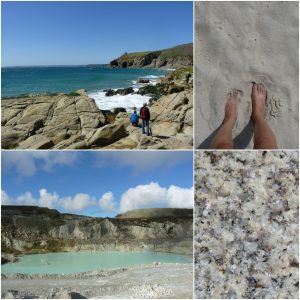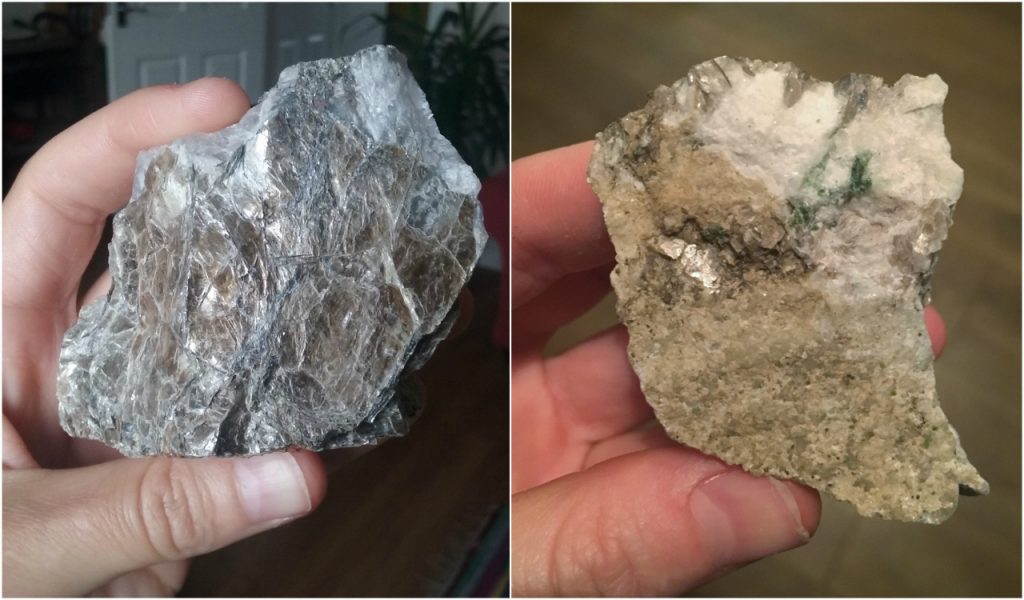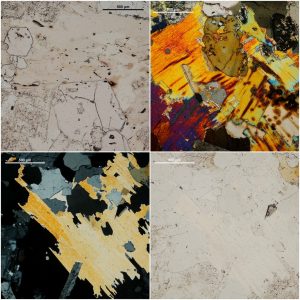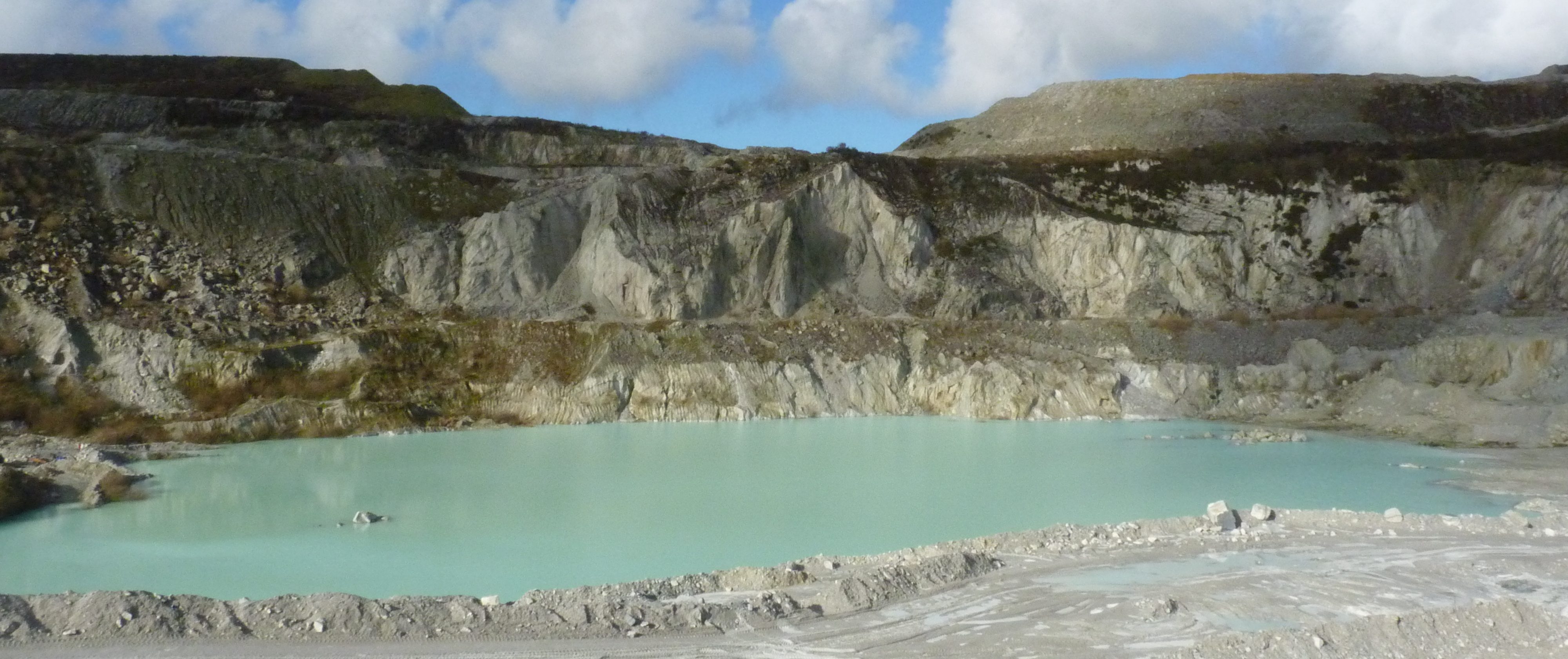Originally published on allaboutgranite.wordpress.com (previous blog) on the 28th January 2017.
There has been lots going on with lithium in Cornwall recently, with the news that a new company (Cornish Lithium) has secured the rights to begin exploration across the county for lithium-rich brines thought to be sitting beneath the surface (Guardian; BBC; Telegraph). These lithium-rich brines have been known about for a while, reportedly mentioned in old reports from United Mines, with lithium data for geothermal waters published as part of the Hot Dry Rocks geothermal energy project in the 1980s (e.g. Edmunds et al., 1985). The earliest report of lithium in Cornwall I could find, was in the obituary of the English chemist, Edward Turner*. In experiements from the 1820s, it is reported he found “lithia-micas” in Cornish granites that contained around 4% lithium.
Anyway, I quite like lithium, as it’s one of the most important components of the mineral mica in SW England, as well as being enriched in my favourite granite. Micas are the flaky, glittery minerals that stick to you if you head to Porthcurno beach in the summer (or any beach with a granite sand!). They make flakes due to their sheet silicate structure, of which there is a good description here. A class of micas, the trioctahedral micas, can soak up a large number of elements in the periodic table due to their complex structure and ability to hold elements of different atomic sizes and charges. It is these trioctahedral micas that can contain significant amounts of lithium and leaching of these trioctahedral micas has been attributed as the mechanism for generating lithium brines in Cornwall (e.g. Edmunds et al., 1985). There are a whole host of trioctahedral micas, with different names but they form a continuum of compositions with variable lithium and iron in their structures.

Across Devon and Cornwall, all of the trioctahedral micas contain at least some lithium, but it starts to get bit more interesting with the super evolved, fractionated tourmaline and topaz granites that have up to 0.4% Li2O (e.g. Manning and Hill, 1990). These granites are found just north of Dartmoor at Meldon, in and around St. Austell, down on the coast near Porthleven and around St. Just and north of here on the coast. In these granites, micas contain up to 5.5 wt.% lithium and very little iron, making them zinnwaldite or lepidolite mica in composition (Henderson et al., 1989, Simons et al., 2016). Zinnwaldite is golden in colour, whereas lepidolite is gold-purple to purple.

In thin section, zinnwaldite is slightly pink, whereas lepidolite is colourless and often confused with another mica called muscovite that is relatively lithium deficient in comparison. Commonly, the trioctahedral micas are intergrown with topaz and tourmaline and have little inclusions of zircon and monazite, more rarely cassiterite and columbite. The mica dams, which are the waste from the china clay extraction in the region, contain these lithium-rich micas. Another lithium mineral only seen in a couple of locations is a lithium-rich green (rarely green-pink) tourmaline, called elbaite, which can have up to 4 wt.% lithium (London and Manning, 1995).

Ultimately, it’s not just lithium brines in SW England, there’s actually loads of lithium kicking about. It remains to be seen whether any lithium can be extracted from the waste mica in the china clay mica dams, but lithium mica projects are happening elsewhere in Europe (e.g. in the Czech Republic), so you never know!
*Post-script added July 2020: Edward Turner was born in Jamaica, and the son of plantation owners. As part of the Abolition of Slavery Act in 1833, he, and his family, received compensation for their slaves on the plantations. This fact is highlighted here, because the opportunities and access to science that Turner enjoyed were funded through slavery – it is important to know about, and acknolwedge, the role that slavery has played in geological research in Cornwall. See here for more information: https://www.ucl.ac.uk/lbs/person/view/329948485
References
- Edmunds W. M., Kay, R. L. F. & McCartney, R. A. 1985. Origin of saline groundwaters in the Carnmenellis Granite (Cornwall, England): Natural processes and reaction during Hot Dry Rock reservoir circulation. Chemical Geology, 49, 287-301.
- Henderson, C. M. B., Martin, J. S. & Mason, R. A. 1989. Compositional relations in Li-micas from SW England and France: an ion- and electron-microprobe study. Mineralogical Magazine, 53, 427-449.
- London, D. & Manning, D. A. C. 1995. Chemical variation and significance of tourmaline from southwest England. Economic Geology, 90, 495-519.
- Manning, D. A. C. & Hill, P. I. 1990. The petrogenetic and metallogenetic significance of topaz granite from the southwest England orefield. In: STEIN, H. J. & HANNAH, J. L. (eds.) Ore-bearing granite systems: petrogenesis and mineralizing processes. Geological Society of American Special Paper.
- Simons, B., Shail, R. K. & Andersen, J. C. Ø. 2016. The petrogenesis of the Early Permian Variscan granites of the Cornubian Batholith – lower plate post-collisional peraluminous magmatism in the Rhenohercynian Zone of SW England. Lithos, 260, 76-94.

